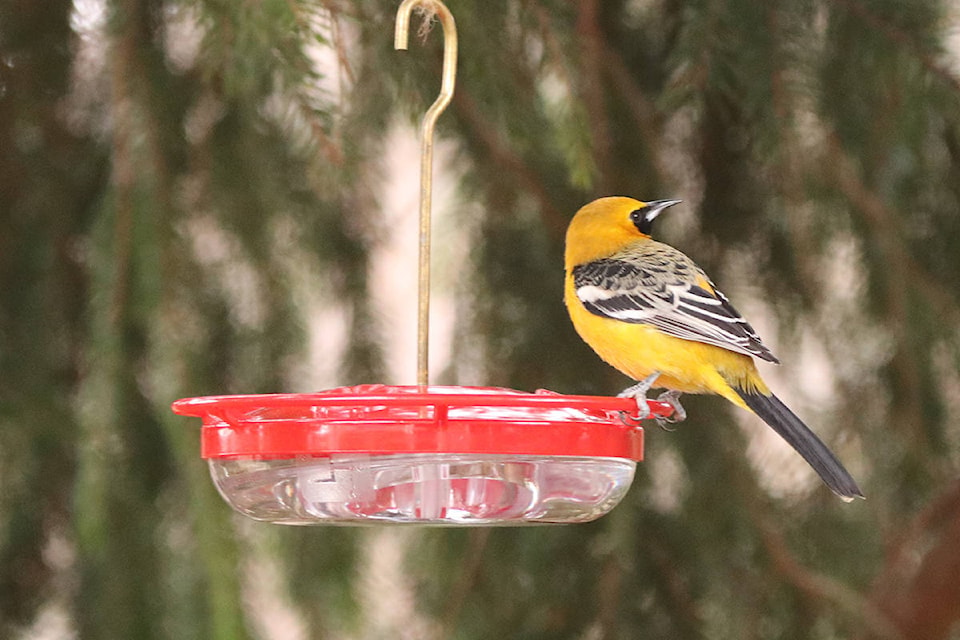You never know what kind of flying friend you might draw in, just by adding a touch of sweetness to your yard.
Stan Coe spotted a rare bird visiting a feeder in Sidney, in southern Vancouver Island, and shared a photo with the Peninsula News Review.
The photo was published in the paper, and local birders quickly realized the bird had been misidentified as an American Goldfinch. Barbara Begg, a bird watcher from North Saanich, identified the bird as a rare hooded oriole.
“I think there’s been about 26 records of this bird in B.C., and certainly not many on the Island. I can think of about four or five around the Greater Victoria area,” Begg says. “I spoke with the fellow who took the photo, and went over to take a look, but did not see this particular one myself.”
The photo has been flagged on the BC Rare Bird Alert website, noting the bird was visiting Coe’s property from Feb. 16 to March 17, but has not been seen again since.
READ MORE: Nanoose Bay photographer’s rare find causes a stir among birdwatchers
“A hooded oriole’s normal range is way down in extreme southwestern parts of the U.S. and Mexico,” Begg says. “Of course with global warming, temperatures are changing and I think more southern species are drifting northward. It happens all over Canada.”
Begg noted that birds who migrate are more likely to get turned around, and can sometimes lose their bearings and fly off course. Hooded orioles tend to breed in western parts of Nevada, California and Texas, and in the winter move to southern parts of Mexico.
“The last time I saw a hooded oriole was in 1988,” says Begg, who has been studying birds for about 30 years.
With its black bib and the intensity of its feather colouring, the bird spotted in Sidney was likely a young male, Bregg says. Hooded orioles are bright orange, with black and white wings, and a black tail. The males are more likely to have a black patch of feathers below the beak.
The Bullock’s oriole, a relative to the hooded oriole, is more commonly found nesting on Vancouver Island. To tell the two species apart, look for several subtle differences: Bullock’s have a black eye line that extends quite far out from their eyes, and hooded orioles have a more downward curved beak.
READ MORE: Steller’s jay invasion: Coastal species makes rare appearance in southern Yukon
The best way to attract one of these birds to your yard, is to put out a hummingbird syrup feeder, or include flowers such as Red Hot Pokers in your garden, Bregg said.
“They mainly eat grubs and nectar from flowers, but will also eat the syrup mix in feeders,” she added.
Plan your adventures throughout the West Coast at westcoasttraveller.com and follow us on Facebook and Instagram @thewestcoasttraveller. And for the top West Coast Travel stories of the week delivered right to your inbox, sign up for our weekly Armchair Traveller newsletter!
